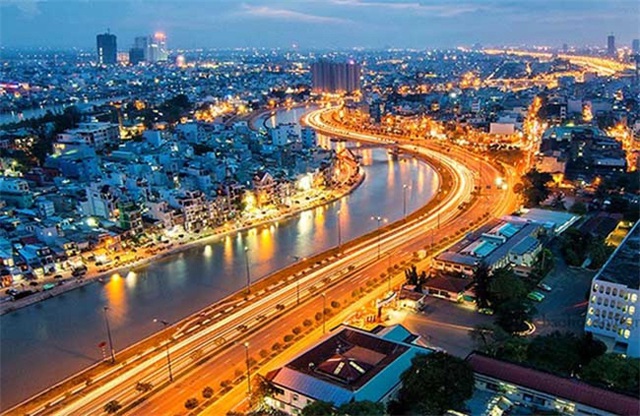Viet Nam on track for a robust recovery: HSBC
VGP - Viet Nam appears to be on track for a robust recovery, noted HSBC in its recent report Viet Nam at a glance released on October 12.

After a challenging first half, Viet Nam's economy recovered at a stronger-than-expected pace of 5.3 percent in the third quarter. This is largely thanks to some reprieve in the trade sector, with September marking the first month of year-on-year growth in its exports.
In particular, China's surging demand for agricultural products has put a floor under Viet Nam's exports. Viet Nam's booming tourism sector remains the bedrock of its services, prompting the government to raise its annual tourism target.
HSBC maintains its 2023 growth forecast for Viet Nam at 5 percent and raises its forecast of average inflation to 3.4 percent, from 3.2 percent.
Rebound in Viet Nam's manufacturing sector
The biggest surprise is the rebound in Viet Nam's manufacturing sector. While it is still too early to call a material recovery in the global trade cycle, Viet Nam's trade sector has had a much-needed reprieve recently.
Although due in part to base effects, exports saw their first growth in more than six months, reducing the severity of export falls from the double-digits in the first half to less than 2 percent year-on-year in the third quarter.
While export weakness remains largely broad-based, decent growth in both computer and agriculture shipments offsets some risks.
The trend is also reflected in Viet Nam's shipments to major trading partners. While exports to the U.S. (30 percent share) and the EU (15 percent share) have yet to see a turnaround, Viet Nam's exports to China (15 percent share) saw double-digit growth sequentially, largely thanks to its impressive growth in agriculture products.
Although China accounts for only 15 percent of Viet Nam's total exports, more than 20 percent of the latter's agricultural exports are shipped to the former, ranging from fruits and rice to cashew nuts and coffee.
In particular, China's demand for tropical fruits, including durian, dragon fruit and jackfruit, has gathered pace in the past two years, with Viet Nam as the main beneficiary along with Thailand.
Viet Nam remains outperformer in ASEAN in FDI attraction
Despite near-term cyclical challenges to trade, Viet Nam's long-term FDI prospects appear intact. The country remains an outperformer in ASEAN in terms of attracting FDI, second only to Malaysia.
Its manufacturing sector accounts for the bulk of FDI, providing hopes that it can climb up the value chain, paving the way for a robust rebound when the trade tide turns.
New FDI continues to pour into the manufacturing space, this year already exceeding the total in each of the past three years.
Tech supply chain relocation remained in focus during President Biden's visit to Viet Nam in September as the two countries elevated their relationship to a comprehensive strategic partnership.
President Biden announced that U.S. tech companies, including Amkor and Marvell, plan to invest in Viet Nam, but not only the U.S. is investing there – a few weeks later, South Korea's Hana Micron joined in by announcing an expansion of its chip production with a US$1 billion investment by 2025.
Viet Nam on track to see continued tourism boom
Outside of manufacturing, services remain the bedrock of Viet Nam's growth. At first glance, the sectors that have enjoyed close to 10 percent year-on-year growth are all tourism-related.
Broadly speaking, ASEAN has seen a return of tourists to around 60-80 percent of 2019's levels, with Viet Nam's recovery pace approaching 70 percent in September.
Viet Nam has welcomed 8.9 million tourists as of September, prompting authorities to upgrade its full-year target to 13 million, from 8 million earlier.
Given the upcoming winter season in the northern hemisphere and the recent visa relaxations, Viet Nam looks to be on track to see a continued tourism boom.
All in all, Viet Nam's economy has seen some much-needed green shoots, particularly in its trade and tourism sectors./.
